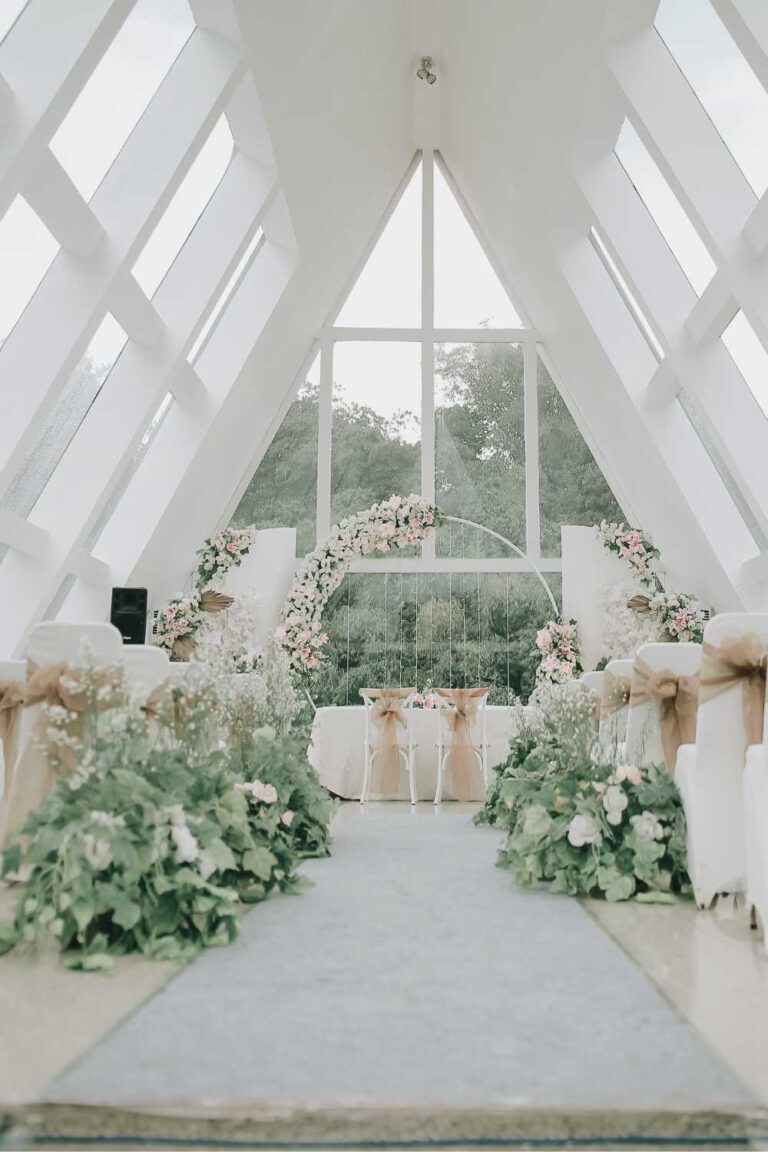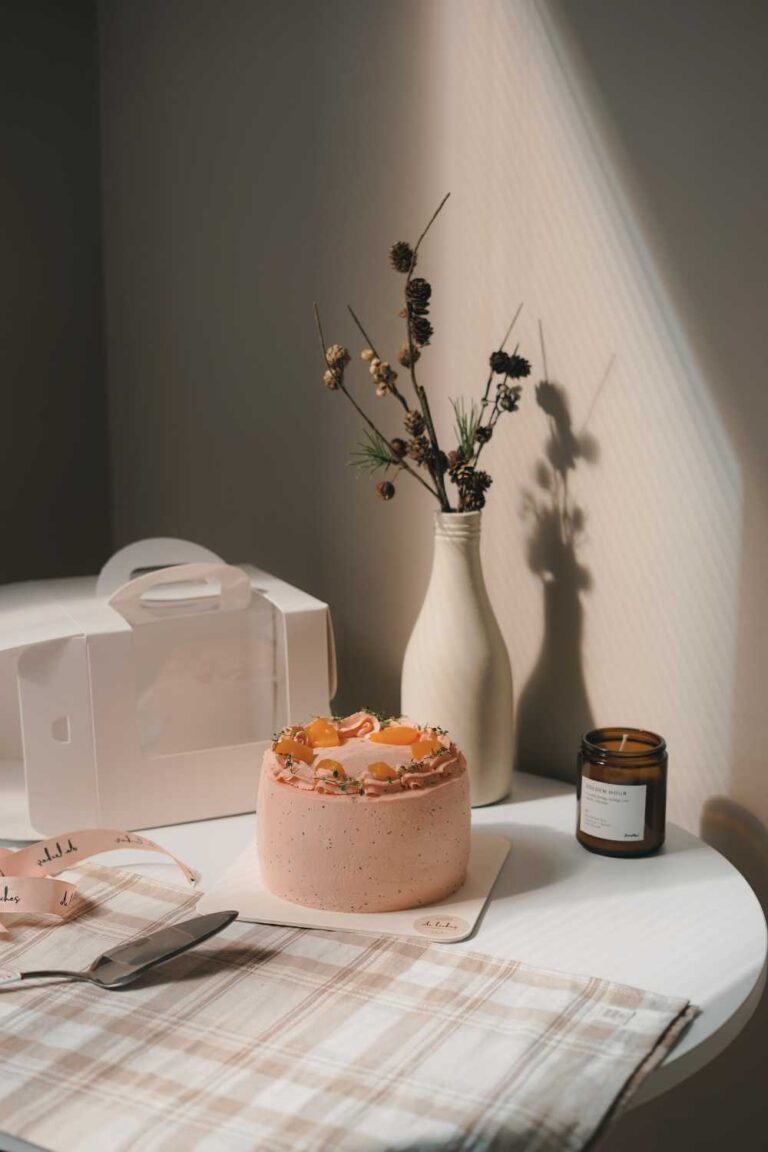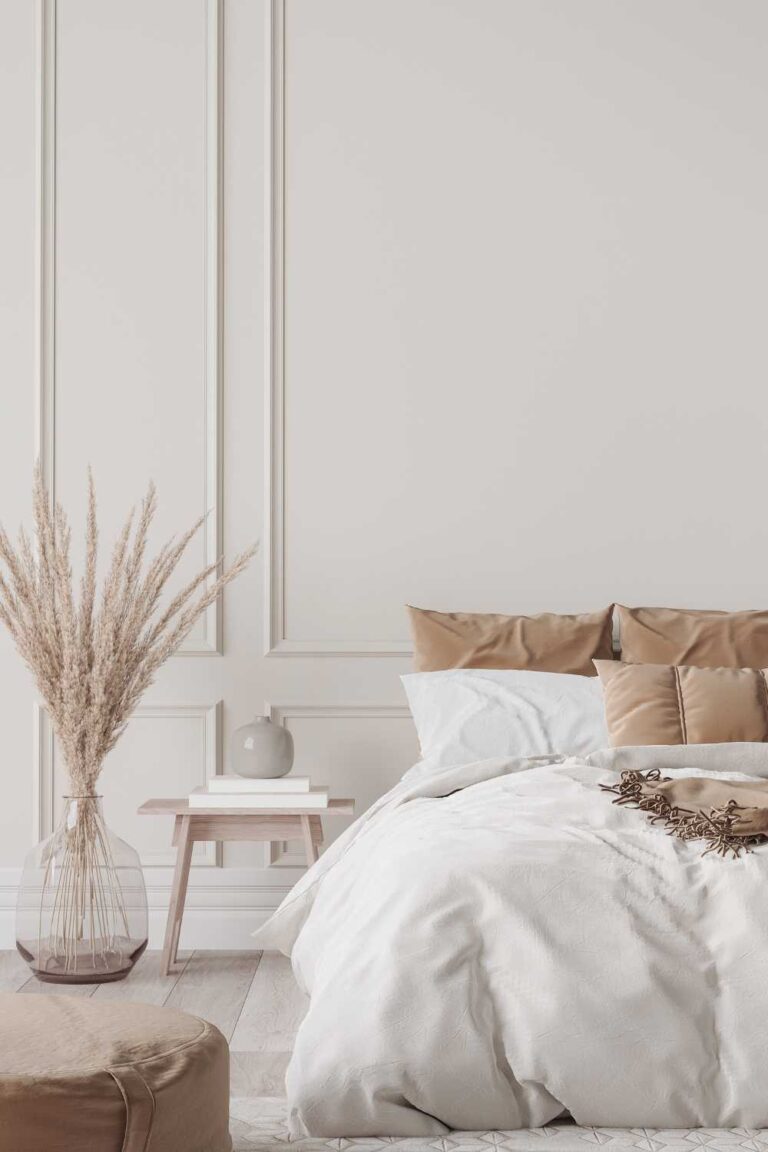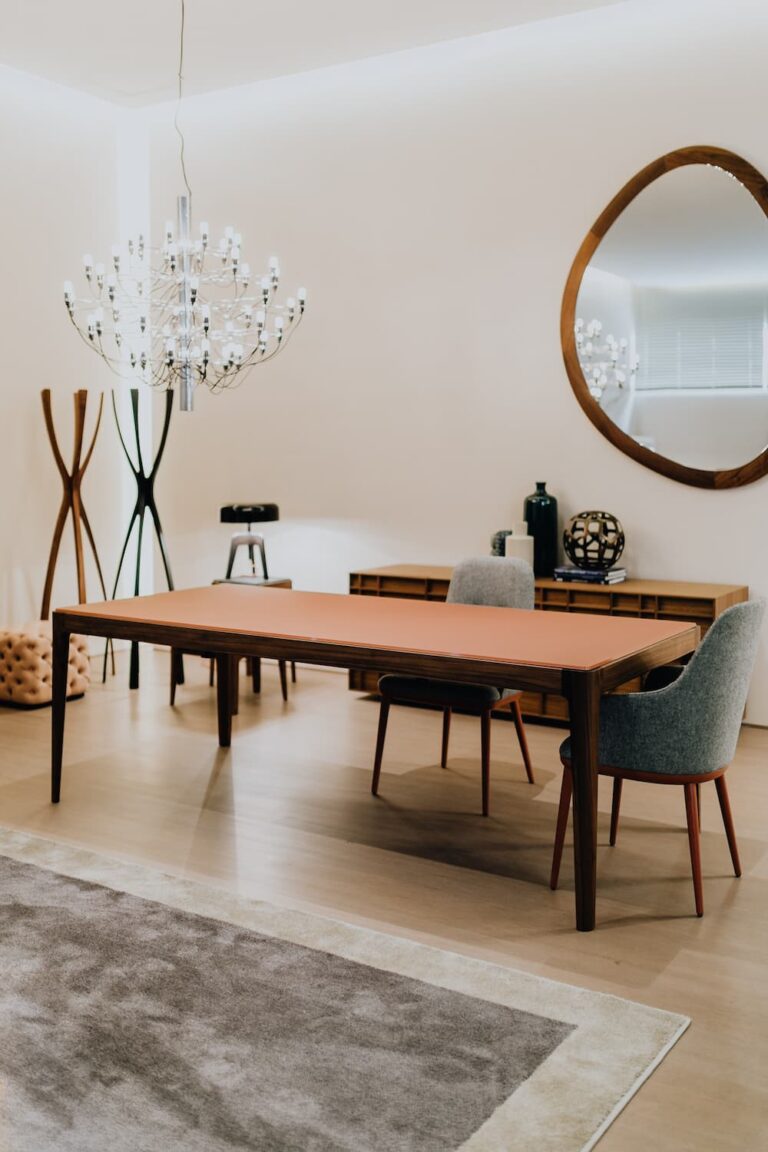Bright and Industrial Home Design
Industrial design, synonymous with clean lines, stainless steel appliances, minimalist aesthetics, bold statements, and raw finishes, has been increasingly dominating the interior design landscape. A sharp deviation from traditional home design themes, this style speaks volumes about functionality and simplicity, elegantly layered with a unique charm. The birth and growth of industrial design are deeply intertwined with significant historical shifts and evolving societal trends.
Historical Context
The origins of industrial design can be traced back to the era of the Industrial Revolution, a period between the late 18th and early 19th centuries. This pivotal time in history witnessed a massive shift from manual labor to mechanized production, transforming rural societies into industrial powerhouses. Factories sprouted in every corner of burgeoning cities, emblematic of the era’s progress and innovation.
Over the years, as industries modernized and relocated, these once bustling factories were left abandoned. Innovative urbanites saw an opportunity in these expansive, desolate spaces, transforming them into residential lofts. This marked the genesis of industrial home design, an aesthetic that pays homage to its manufacturing past while catering to contemporary living needs.
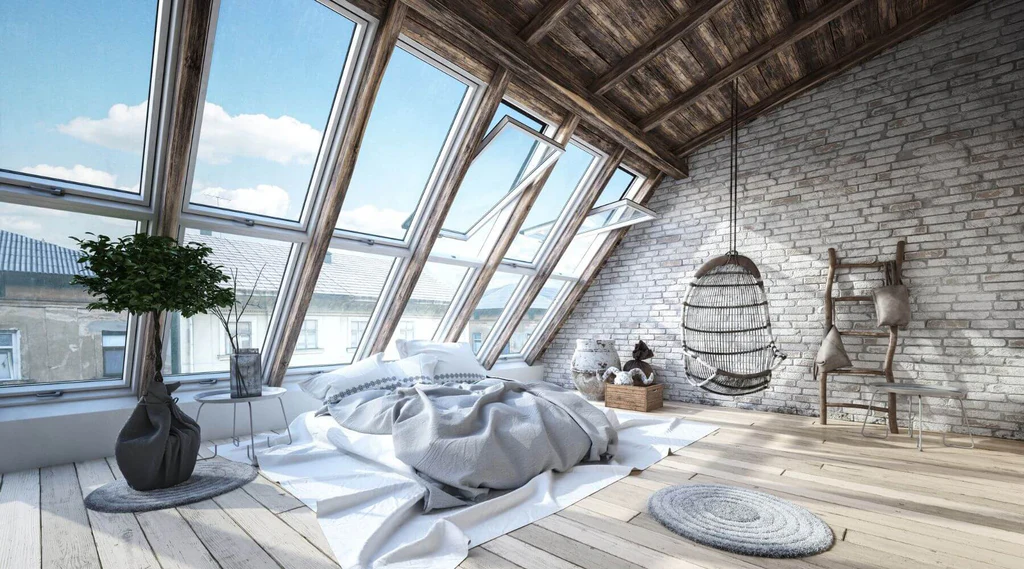
Current Trends
Industrial design has since evolved, adapting to the changing tastes of society while preserving its quintessential elements. The present-day industrial design trend veers towards a more relaxed and approachable version known as “industrial chic.”
This design style retains the traditional industrial aesthetics’ open space concept and raw elements, but infuses it with more warm and homely elements. Think softer furnishings, warmer color palettes, and a touch of greenery. This amalgamation creates spaces that feel lived-in and inviting, combining the best of both worlds – raw industrial authenticity and modern comfort.
And if you want to level up your home decor game with the top 10 must-have furniture pieces for a Scandinavian Industrial Modern home. Dive in now and redefine your living space!
Key Elements of Bright and Industrial Home Design
Industrial home design is characterized by a unique blend of elements that give it an unmatched, raw aesthetic. These features are starkly different from typical home designs, reflecting architectural marvels, smart material choices, and an artistic combination of the rugged and refined.
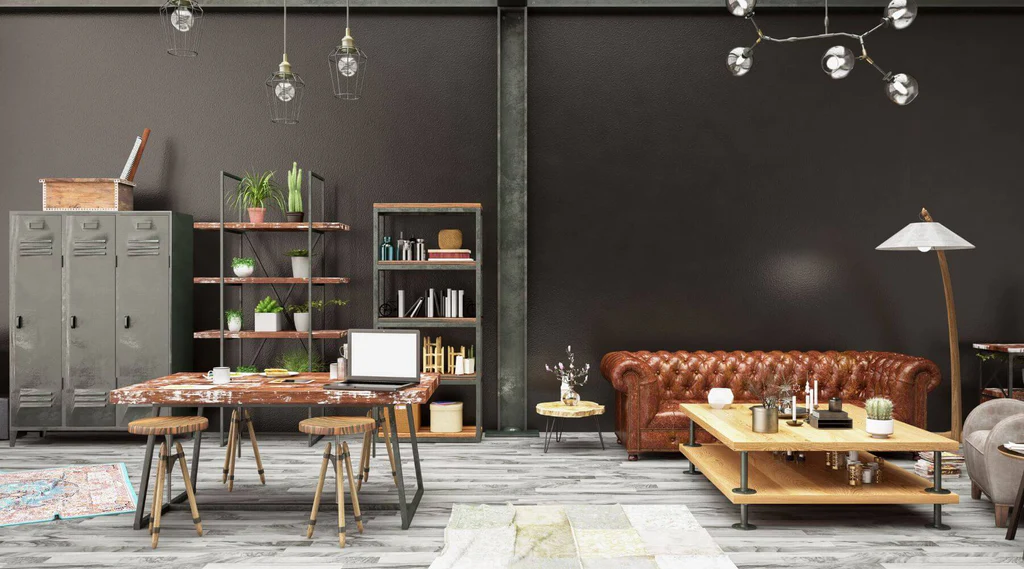
Exposed Brick Walls
Unfinished, exposed brick walls are one of the most iconic features of industrial design. They infuse a rustic charm into the space, lending a textured backdrop that exudes a raw, earthy feel. The brick walls’ characteristic red-brown tones also add a warm touch to the otherwise austere industrial palette, providing an aesthetic balance.
Open Floor Plan
An open floor plan is another distinctive element of industrial design. Mimicking the vast, unpartitioned spaces of factories, this layout encourages a seamless flow of space. The absence of partition walls fosters interaction and connectivity, contributing to a social, inclusive living environment. This spatial fluidity also enhances the sense of scale and openness, making the space appear larger than it is.
High Ceilings and Large Windows
Industrial homes typically boast high ceilings and large windows. High ceilings enhance the sense of vertical spaciousness and grandeur, reminiscent of lofty factory interiors. Large windows, often stretching from floor to ceiling, ensure abundant natural light, illuminating the space to create a bright and welcoming atmosphere. They also help establish a strong indoor-outdoor connection, further elevating the open-space concept.
Metallic accents are a staple in industrial design. Be it dark iron, stainless steel, or aged copper, metal introduces an edgy, sleek vibe to the space. It’s commonly employed in structural elements, furniture, light fixtures, and decor accessories, adding a hint of modern sophistication. The gleaming metallic surfaces set against the softer, matte textures create an exciting interplay of finishes, enhancing the space’s visual interest.
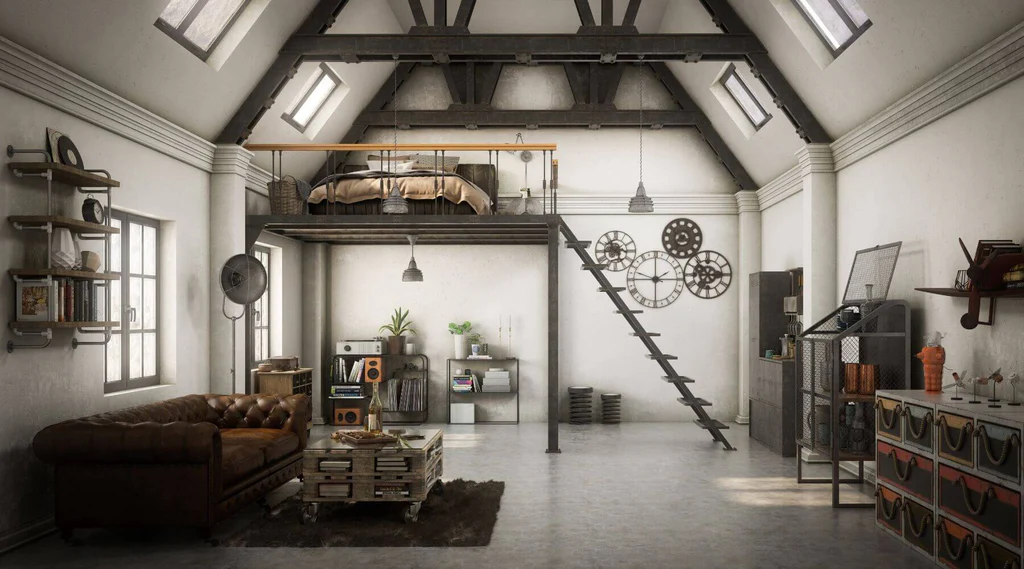
Image by: Pexels
Transforming Your Home into an Industrial Design
Creating an industrial-styled home requires a fine balance between preserving the inherent architectural charm and introducing contemporary design elements. This transformation demands an understanding of the design language, resourcefulness, and a creative knack for blending styles.
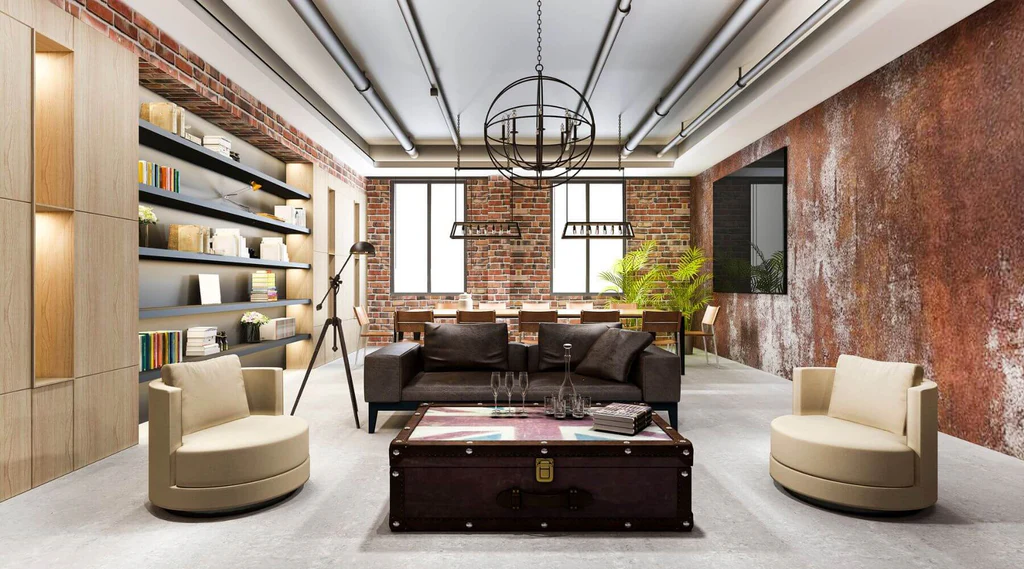
Image by: Pexels
Tips and Tricks
Embarking on an industrial-style makeover begins with embracing your home’s architectural character. If possible, expose structural elements like brickwork, concrete walls, or metal beams to highlight their raw beauty. Adopt an open floor plan to create a sense of space and fluidity. Metallic accents, especially in lighting fixtures and furniture, can enhance the industrial appeal. To invite brightness, install large windows; if not feasible, rely on artificial lighting solutions that mimic natural light.
Although industrial design often leans towards a monochrome palette, don’t hesitate to introduce color. A bold color splash against a neutral backdrop can create a striking contrast, adding depth and personality to the space.
Discover our exclusive Industrial Decor Collection and transform your space with effortless style and ture industrial style home decor pieces.
The Future of Industrial Home Design
The horizon of industrial design seems to be converging with sustainable practices and technological advancements. The use of environmentally-friendly materials, energy-efficient technologies, and repurposed furniture are becoming increasingly popular in industrial home design.
The rise of smart homes brings another exciting dimension, incorporating tech elements seamlessly into the industrial aesthetic. The blend of tradition and innovation is sure to offer a fresh take on industrial design, pushing the boundaries of creativity.
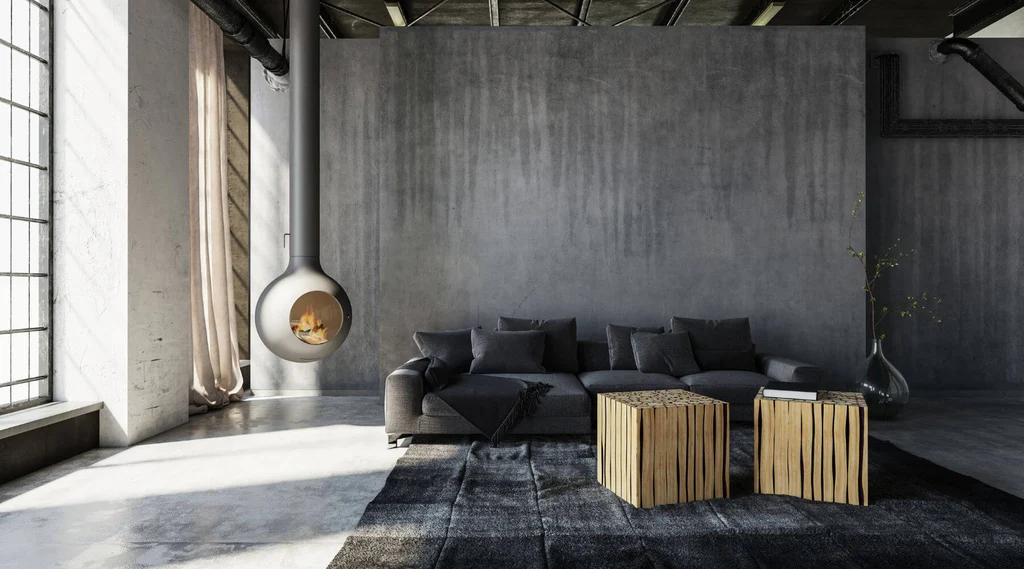
Image by: Unsplash
Final Words
Bright and industrial home design is more than an aesthetic choice. It’s a lifestyle choice that appreciates the beauty of the raw and unfinished, celebrates open spaces, and harmonizes it with bright, warm elements. If you’re a fan of stark textures, structural elements, and expansive spaces, then this design style might just be your perfect match.
It’s about creating a living space that resonates with your individuality while honoring its roots in history. So, gear up and let your home tell its unique industrial story. Happy designing!


